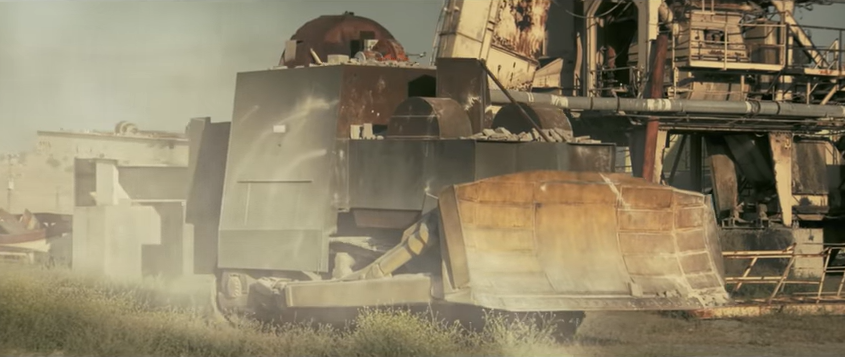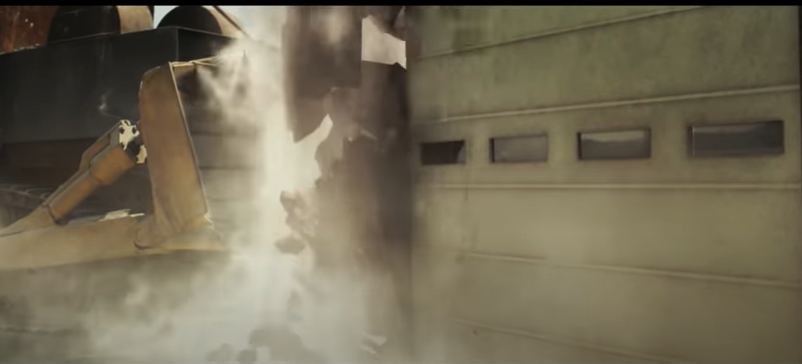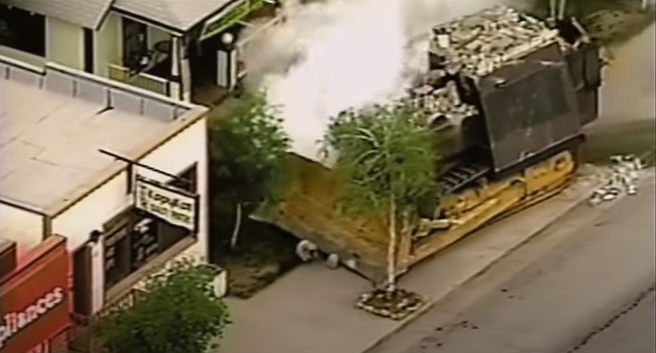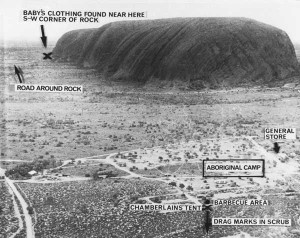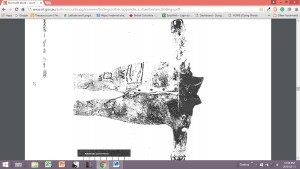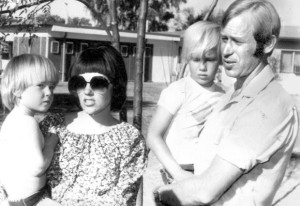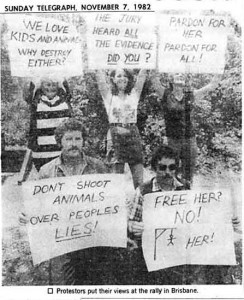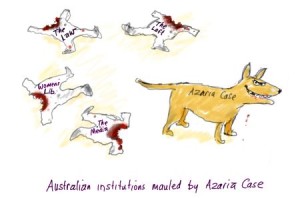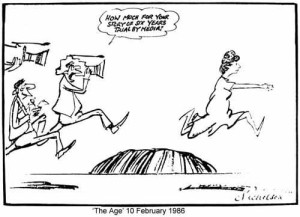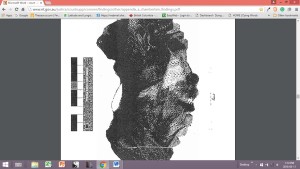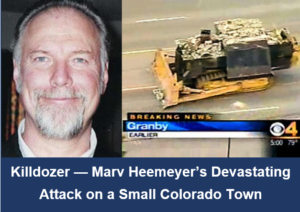 On June 4th, 2004, fifty-two-year-old Marvin Heemeyer went on a rampage at Granby, Colorado in an armor-fortified bulldozer he hand built for the job. In two hours and nine minutes, Heemeyer and his Kill Dozer destroyed thirteen buildings along with many vehicles, causing $7 million in damages. Fortunately, no one was injured except for Heemeyer whose life ended with a self-inflicted gunshot wound to the head.
On June 4th, 2004, fifty-two-year-old Marvin Heemeyer went on a rampage at Granby, Colorado in an armor-fortified bulldozer he hand built for the job. In two hours and nine minutes, Heemeyer and his Kill Dozer destroyed thirteen buildings along with many vehicles, causing $7 million in damages. Fortunately, no one was injured except for Heemeyer whose life ended with a self-inflicted gunshot wound to the head.
The Granby damage was massive. It was also unprecedented. Never had anyone taken an ordinary construction bulldozer and, over the course of a year, turned it into an impenetrable war machine equal to an armed military tank.
Also unprecedented was the story behind Heemeyer’s rampage on his town. It’s a story of feuds, a story of paranoia, and a story of an ingenious man who built a single purpose machine — an assault system solely made for a devastating attack on a small Colorado town.
Here is the Kill Dozer story.
Marvin John Heemeyer was born in South Dakota. He never married and had no children. Marv, as he was known by everyone, moved to Granby, Colorado in 1992. He bought two acres of land and set up a welding and muffler repair shop. He was a highly skilled mechanic and a supreme welder. Soon, Heemeyer had a thriving business and accumulated a good deal of wealth.
Heemeyer was popular with his friends and was an avid outdoorsman, particularly a love of snowmobiling. Friends found him a natural leader and a generous soul. His Granby neighbors and town officials saw him otherwise.
The Docheff family owned an adjacent property to Heemeyer. In 1998, they applied to the Town of Granby for a rezoning application so they could build a concrete batching plant. Heemeyer opposed this and tension began.
Shortly, a sanitation issue arose about Heemeyer’s property. He managed his sewage through a non-approved holding tank and a makeshift drainfield. The town bylaws disallowed this, and officials ordered Heemeyer to hook up to the civic sanitary system. This required a lengthy pipe run and would cost Heemeyer somewhere around fifty thousand dollars to construct which he refused to pay.
The town council responded by ordering the bylaw enforcement department to fine Heemeyer daily until he complied. He still refused and eventually forked over $3,350 to avoid arrest. Heemeyer had retained a lawyer who found a loophole and had the daily fines stopped. The town council responded by working to close the loophole and continue the compliance pressure on Heemeyer.
The Docheff family gained their rezoning and began building the concrete plant. By now, their conflict, feud if you will, with Heemeyer escalated. Out of no coincidence, the shortest and most economical route for Heemeyer’s sewage run was through a short section of the Docheff property. The Docheffs were ordered by the Town of Granby to allow Heemeyer a sewage passage easement through their site.
This, the Docheffs couldn’t refuse. But they did refuse Heemeyer a further road thoroughfare through their new concrete facility which had been used under a common law understanding for years prior to Heemeyer’s arrival. Heemeyer was now landlocked and had to build a new road at an immense cost.
Heemeyer conceded when the Docheffs offered to buy Heemeyer’s shop and lot. They settled on $250,000 and had a deal. That was until Heemeyer broke it and raised the price to $375,000. The Docheffs accepted the counter. Then Heemeyer raised the stakes to a million.
The deal collapsed and Heemeyer was back facing his two problems—the sewer line and the road. Now, Marv Heemeyer was a determined man. He went to a California auction and bought a bulldozer. Most folks thought Heemeyer intended to use the dozer to build his new road. However, once Heemeyer trailered it back to Colorado he simply parked it. The front end, with its sizable blade, pointed directly at the Docheff concrete plant.
It’s important to know something about Granby. Its population was around two thousand, and it sat about an hour and a half drive northwest of Denver. It’s small town in mindset makeup with most of the council members being from long-established families—the council being a circle of good ole boys.
(Fast forward to Heemeyer’s motivation. Before starting his Kill Dozer rampage, Heemeyer tape-recorded his views of the Docheffs and specific council members. He mailed the tapes to his brother on the morning of the crimes, and they were later released to the media. If you’re at all interested in this case, it’s a must that you watch a 2020 documentary titled Tread. It’s on YouTube – Click here and you’ll hear Heemeyer’s actual voice stating his grievances and intentions. It’s an exceptionally well-filmed and edited production.
 In 2002, Heemeyer was offered an out. It came from a Granby family who were expanding their garbage collection business. They purchased Heemeyer’s property and buildings for a generous sum which left Heemeyer well off financially. Part of the deal was Heemeyer retaining a lease on one shop, and inside he parked his bulldozer.
In 2002, Heemeyer was offered an out. It came from a Granby family who were expanding their garbage collection business. They purchased Heemeyer’s property and buildings for a generous sum which left Heemeyer well off financially. Part of the deal was Heemeyer retaining a lease on one shop, and inside he parked his bulldozer.
The new owners negotiated a road passage from the Docheffs and, within a week of possession, had the sewer connection built. Meanwhile, Marv Heemeyer secretly went to work modifying the machine.
Heemeyer’s bulldozer was a Komatsu D355A. Its static weight was 49 tons, and its 410-horsepower turbocharged diesel engine allowed a crawling speed of 7.35 mph. However, its pushing and pulling power was enormous.
Heemeyer began transforming the dozer into a tank by welding a shroud of double-hulled ½ inch thick steel plates separated by a 4-inch concrete liner that encased the entire driving cab, engine compartment, and vulnerable track parts. This increased the weight to 61 tons or 122,000 lbs. The shroud’s effect was equivalent to plate protection on an Abrams tank that could withstand small and medium-sized firearms and hand-thrown explosive devices.
Marv Heemeyer planned for a heavy counter-offensive. His operating compartment was completely sealed from any external environment threat, including gas attacks. He devised a filtered air conditioning system that was fan-driven and filter-backed. For sight, Heemeyer positioned six external cameras linked to three video screens that gave him a 360-degree view. Over the camera lenses, he placed 4-inch-thick, bullet-proof Lexan plastic guides. And knowing his lenses would be affected by building debris, Heemeyer installed compressed air nozzles to blow away the dust.
The ”MK Tank”, as Heemeyer called it, wasn’t just a mobile battering ram designed to knock down buildings. It was also heavily armed with three weapons set through firing ports. One was a Barret M82 50 caliber (12.7mm) semi-automatic sniper rifle. The second was a 7.62 (.303) FN FNC semi-automatic assault rifle. The third was a Ruger Mini-14 5.56 (.223), also in semi-automatic mode. (For the non-firearms folks, these are immensely reliable and capable weapons.) As well, Heemeyer had two handguns in the operating area – a 9mm pistol and a .357 Magnum revolver.
Heemeyer had his Kill Dozer fully loaded with fuel. In the mid-afternoon of June 4, 2004, he was set to go. He lowered the cabin shroud with an overhead hoist which sealed him inside with no way out. This was inherent in his design and showed he planned to fight to his end. When he was ready, he fired the beast up and burst from the shop. Straight through a wall.
Heemeyer’s first target was Docheff’s concrete plant. He rumbled over and began to smash buildings apart and crush parked vehicles. In shock and awe, the Docheffs vainly tried to stop him by jamming metal rods into the tracks and blocking the Kill Dozer’s path with their on-site machinery. That failed.
Heemeyer had his way with the Docheffs. Then he headed for town. Over a two-hour and nine-minute demolition derby, Heemeyer managed to destroy thirteen buildings and a pile of cars and trucks. He’d made a list of his victims, and he methodically carried them out.
On the list, besides the Docheffs, were the former mayor’s house, the town hall, the police station, a hardware store, a bank, and even the public library. During the rampage, every available resource was activated. The police SWAT team tried to defeat the machine with bullets and stun grenades, but these had no effect. Even climbing the “tank” was near impossible. Heemeyer planned for this as well—he’d greased the sides of the armor plates.
Heemeyer’s attack on the town might be one of the best-documented crimes ever committed. Everyone from town turned out to watch: Moms, dads, kids, and the dogs. Many had video cameras and today YouTube is loaded with the carnage.
News agencies had helicopters in the air firing live feed around the world. The Colorado Governor was also planning a helicopter thing—considering activating the National Guard with Apaches equipped with anti-tank missiles to take out Marv Heemeyer.
That never happened. Marv Heemeyer caused his own demise. While he was about to bulldoze his nemesis’s hardware store, the dozer’s radiator sprung a leak and shorted his power through overheating. As he was swathing the side of the store, Heemeyer failed to account for a basement and the right tracks became suspended in the void which stopped his traction.
The machine shut down. The rampage was over. Soon, a single gunshot rang out inside the Kill Dozer. Heemeyer put the .357 in his mouth and pulled the trigger.
It took hours before a work crew with blow torches was able to cut through the plating and remove Heemeyer’s body. The machine was eventually scrapped and the pieces were dispersed to various scrapyards—the thinking was to prevent souvenir hunters from building a shrine to what was becoming a folk hero.
Today, around the internet, there are fringe groups who worship Marv Heemeyer. Here was a man, they say, who was smothered by The Man and struck back with due vengeance.
Others see Marv Heemeyer as a crazy man, a domestic terrorist, a common criminal who, by the Grace of God didn’t kill anyone but himself. The police point out how many shots Heemeyer fired at them, and town officials pointed out that a children’s group was in the library when Heemeyer attacked.
Mentioning God, this is a good point to wrap up this post as God played an important role in Heemeyer’s determination to build the Kill Dozer and unleash its terror on the Town of Granby. Again, if you’re really interested in what made Marv Heemeyer go to such lengths to commit such an atrocity, watch the recent 2020 documentary titled Tread. It’s on YouTube – Click here and you’ll hear Heemeyer’s actual voice stating his grievances and intentions. It’s an exceptionally well-filmed and edited production.
Here are quotes from Marv Heemeyer taken from his pre-assault recordings:
“God built me for this job. I think God will bless me to get the machine done, to drive it, to do the stuff I have to do. God blessed me in advance for the task I am about to undertake. It is my duty. God has asked me to do this. It’s a cross that I am going to carry and I’m carrying it in God’s name.”
“I was always willing to be reasonable until I had to be unreasonable. Sometimes reasonable men must do unreasonable things.”




